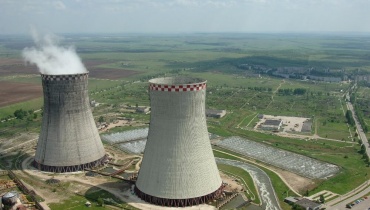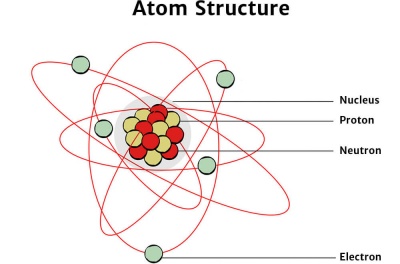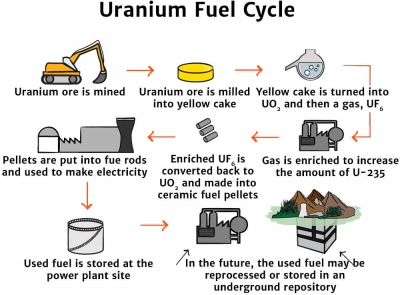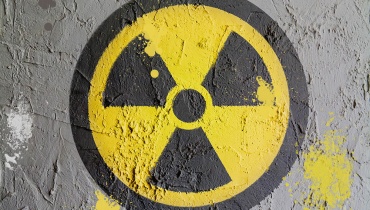Nuclear Energy
Up and Atom
In a Flash

Nuclear power plant generating electricity.
Nuclear Energy
Nuclear energy comes from the nucleus of atoms. The energy is released by nuclear fusion (nuclei are fused together) or nuclear fission (nuclei are split apart). Nuclear plants use nuclear fission of a radioactive element called uranium to generate electricity.
Burning Questions

Atoms are extremely small. Usual sizes are around 100 picometers.
Where does nuclear energy come from?
Atoms – the particles that make up every object in the universe – consist of neutrons, protons and electrons. They contain a nucleus, which is where nuclear energy comes from.
Nuclear energy is released from an atom through either:
- Nuclear fusion, when nuclei of atoms are combined or fused together. This is how the Sun produces energy.
- Nuclear fission, when nuclei of atoms are split apart. This is the method used by nuclear plants to generate electricity.
What is uranium?
Uranium is a radioactive element that was formed when the Earth was first created. It occurs naturally in certain types of rock.
Uranium is one of the few elements that is easily fissioned, so is used as fuel by nuclear power plants. Although uranium is found all over the world, it is still a non-renewable energy source.

When an atom splits into two parts, it releases energy. This process is known as fission.
What happens during nuclear fission in a nuclear plant?
A particular form of uranium – called uranium-235 – is most commonly used for energy production, as its nucleus splits easily when it is bombarded by a neutron.
Here's what happens during a nuclear fission reaction:
- The nucleus of a uranium atom is bombarded by a neutron, causing it to split into two atoms
- At the same time, energy is released as heat and radiation
- As a result of the fission reaction, more neutrons are released
- These neutrons then start bombarding other uranium atoms, so the process keeps repeating itself. This is called a chain reaction
What Do You Mean?

Follow the path uranium takes from a raw mined resource to becoming a fuel rod used to create electricity.
Nuclear energy is a non-renewable energy source that comes from the nucleus of atoms.
Nuclear fusion is when the nuclei of atoms are combined or fused together.
Nuclear fission is when the nuclei of atoms are split apart.
Nuclear power plants produce electricity by using nuclear fission.
Uranium is a naturally-occurring radioactive element found in rocks all over the world.
The uranium fuel cycle is the name given to the process of mining the uranium ore, using it in a nuclear reactor, then disposing of it.
Speedy Summary

An international symbol of radiation.
Nuclear energy comes from the combining (fusion) or splitting apart (fission) of the nucleus of atoms. In nuclear power plants, the radioactive element uranium undergoes nuclear fission to produce electricity.
Teacher's Toolkit
Take this to the classroom!
Curriculum ready content.
